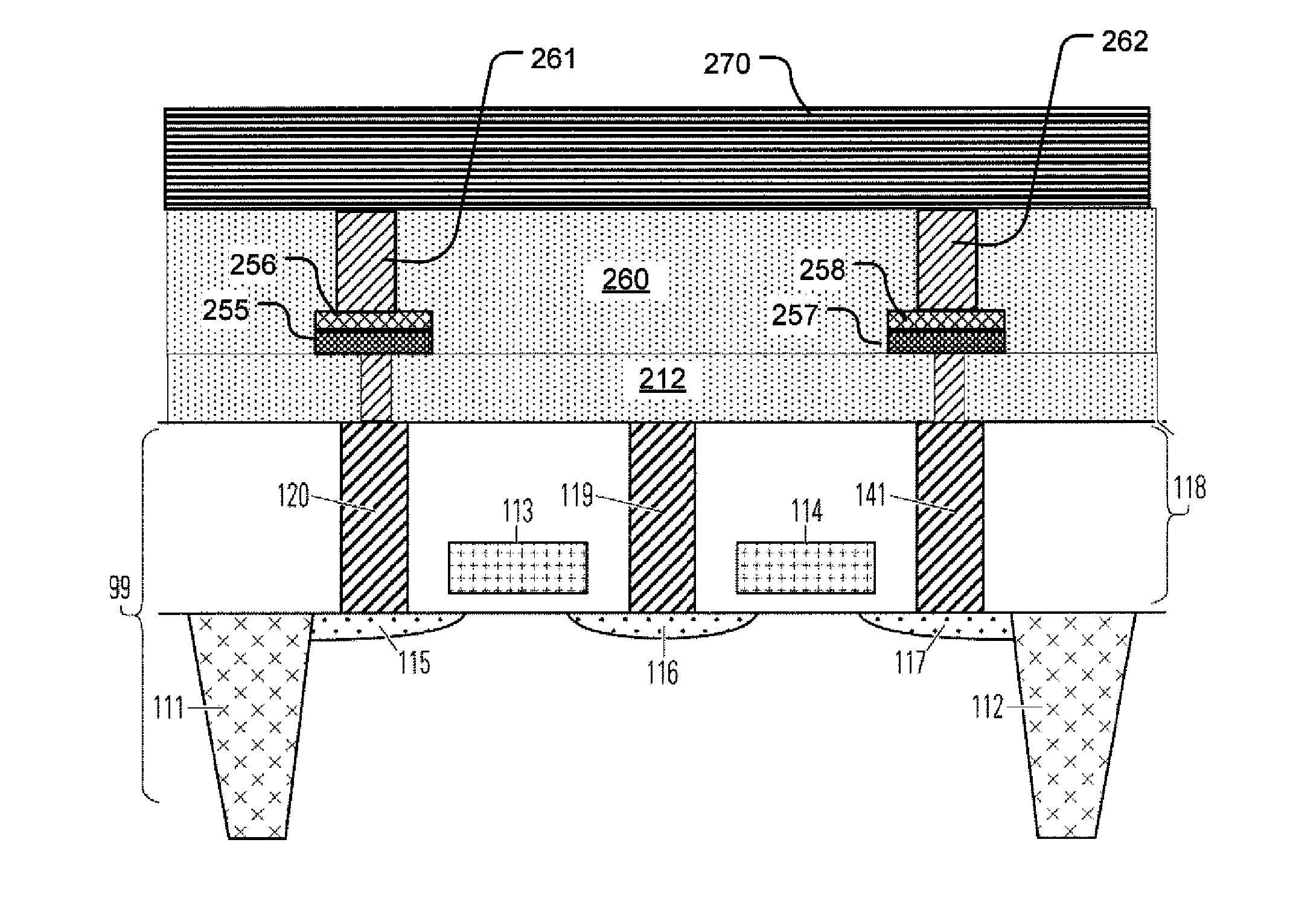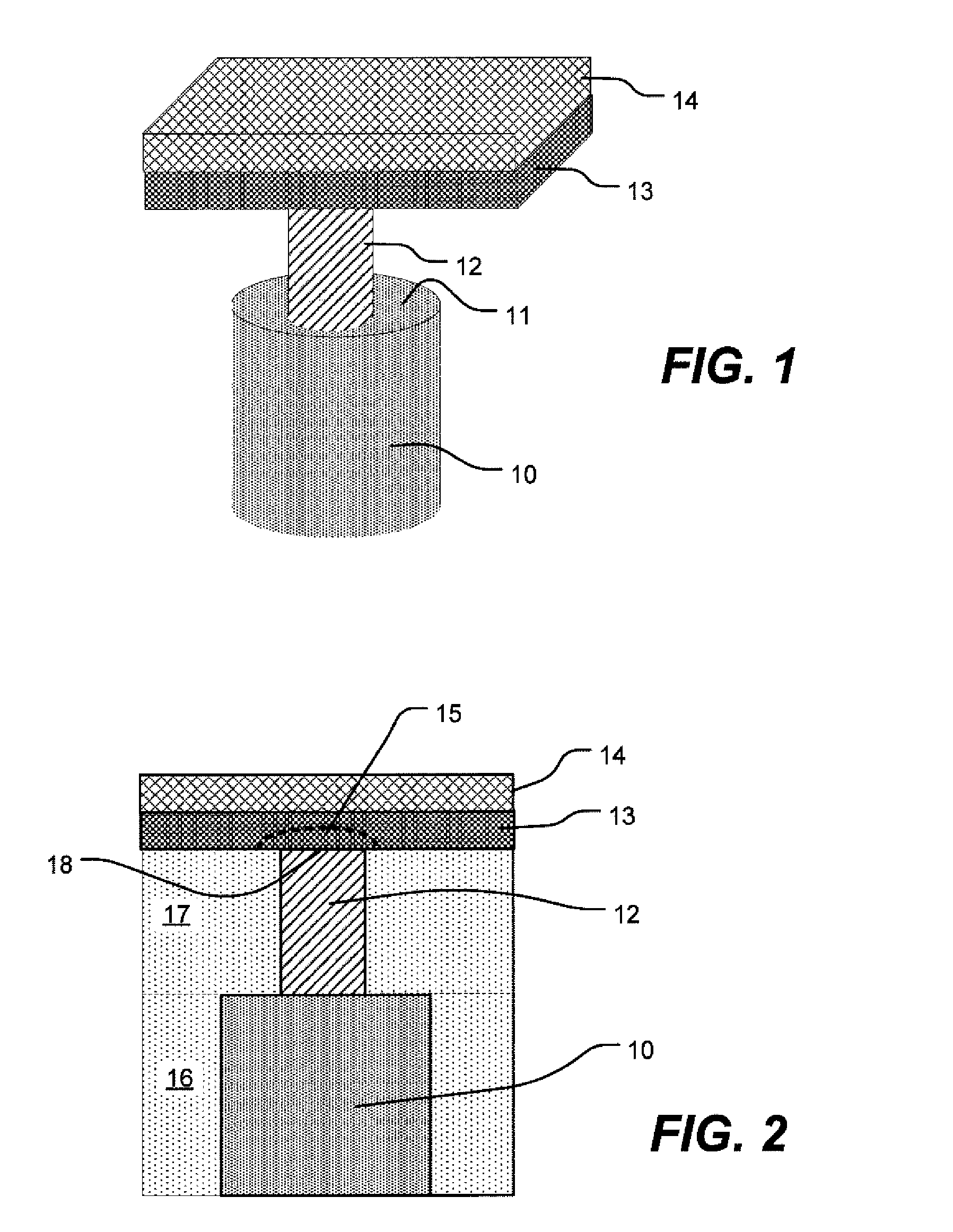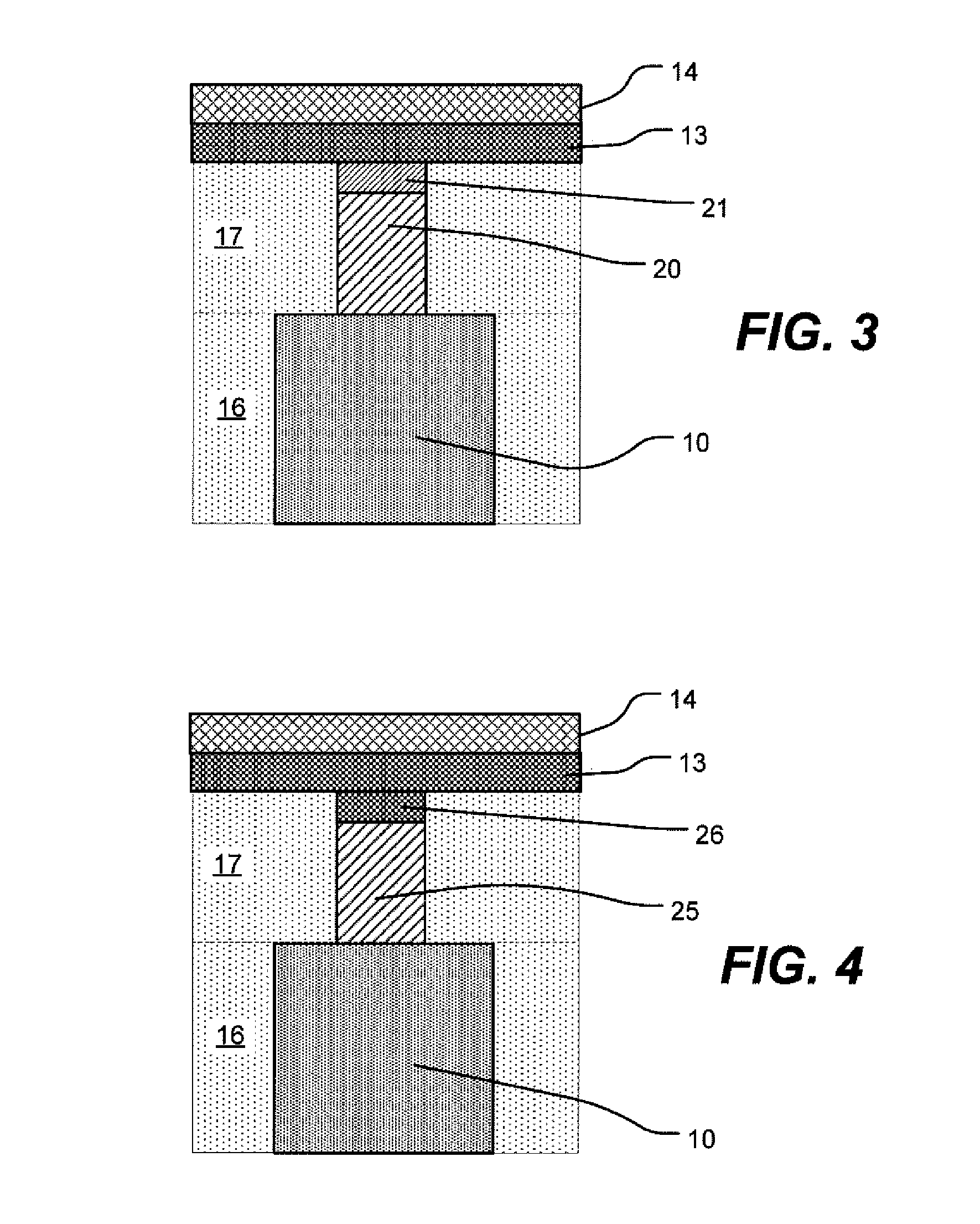Method for manufacturing a phase change memory device with pillar bottom electrode
a memory device and bottom electrode technology, applied in semiconductor devices, digital storage, instruments, etc., can solve the problems of reliability and yield problems, cell in the array permanently disconnected from the access circuit, and the underlying access circuitry at the bottom of very small vias is difficult to form reliable contact, etc., to improve the operation characteristics of the memory cell, improve the electrical connection to the pillar, and improve the current density
- Summary
- Abstract
- Description
- Claims
- Application Information
AI Technical Summary
Benefits of technology
Problems solved by technology
Method used
Image
Examples
Embodiment Construction
[0030]The following detailed description is made with reference to the figures. Those of ordinary skill in the art will recognize a variety of equivalent variations on the description that follows.
[0031]With regard to directional descriptions herein, the orientation of the drawings establish their respective frames of reference, with “up,”“down,”“left” and “right” referring to directions shown on the respective drawings. Similarly, “thickness” refers to a vertical dimension and “width” to the horizontal. These directions have no application to orientation of the circuits in operation or otherwise, as will be understood by those in the art.
[0032]FIG. 1 provides a prospective view of the basic structure of a phase change memory cell manufactured as described herein with dielectric fill material removed from the drawing. The memory cell is formed on a contact 10 having a contact surface 11. Contact 10 comprises a “plug” extending through an inter-layer dielectric to underlying access c...
PUM
 Login to View More
Login to View More Abstract
Description
Claims
Application Information
 Login to View More
Login to View More - R&D
- Intellectual Property
- Life Sciences
- Materials
- Tech Scout
- Unparalleled Data Quality
- Higher Quality Content
- 60% Fewer Hallucinations
Browse by: Latest US Patents, China's latest patents, Technical Efficacy Thesaurus, Application Domain, Technology Topic, Popular Technical Reports.
© 2025 PatSnap. All rights reserved.Legal|Privacy policy|Modern Slavery Act Transparency Statement|Sitemap|About US| Contact US: help@patsnap.com



